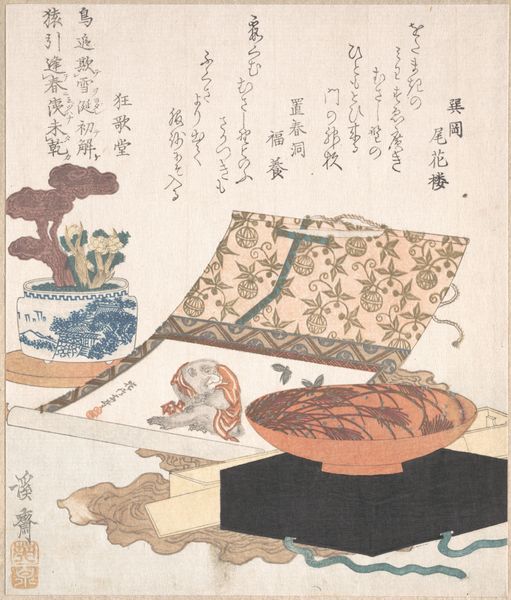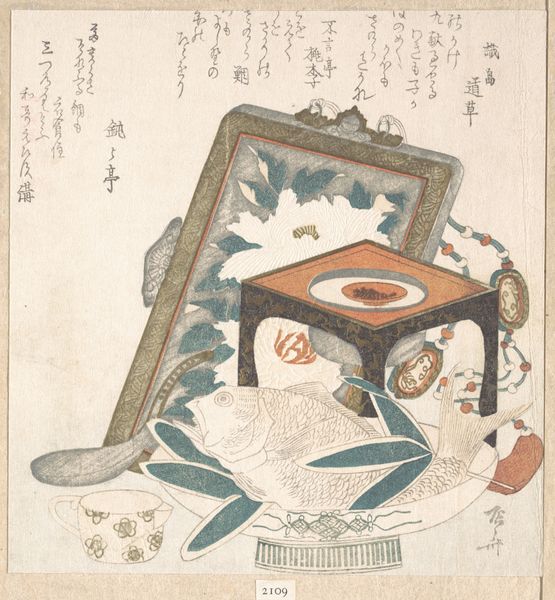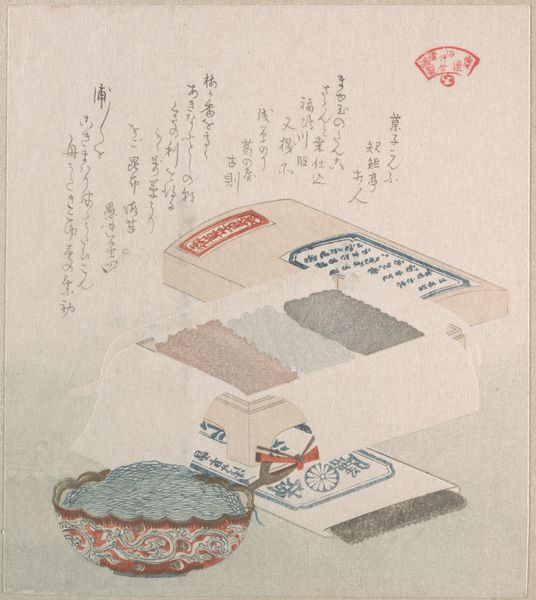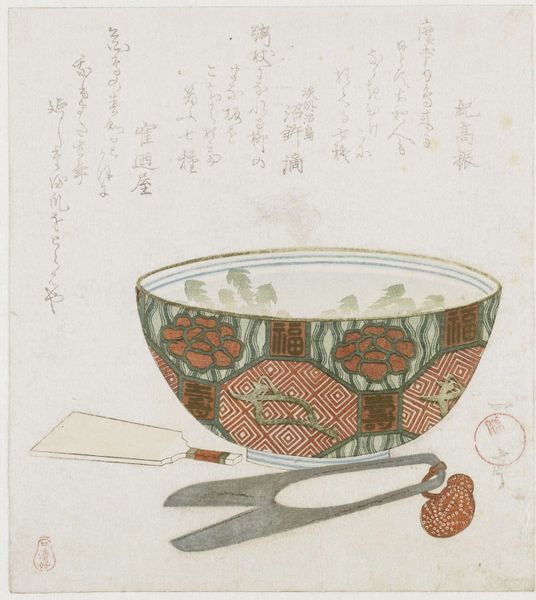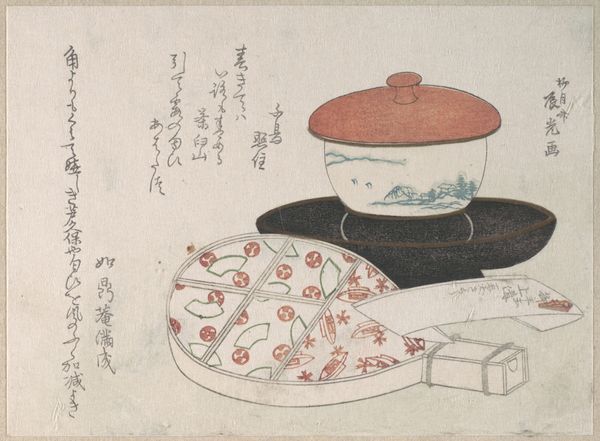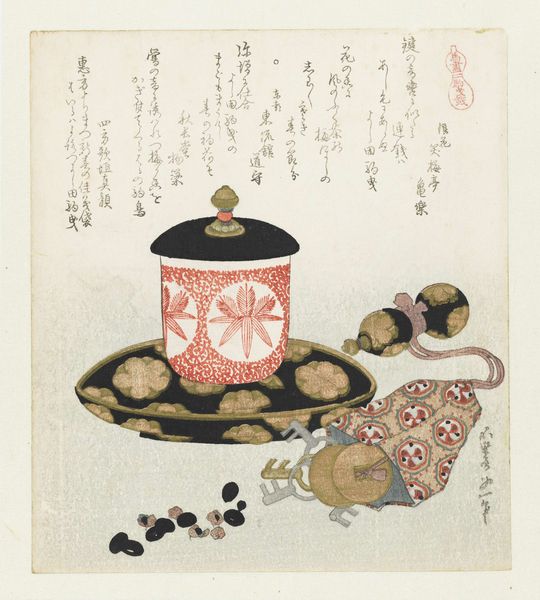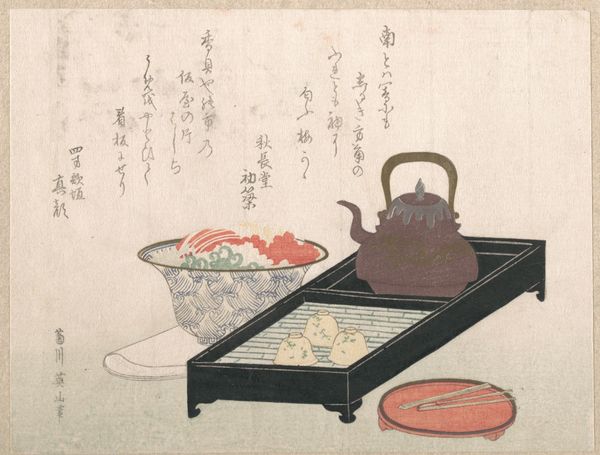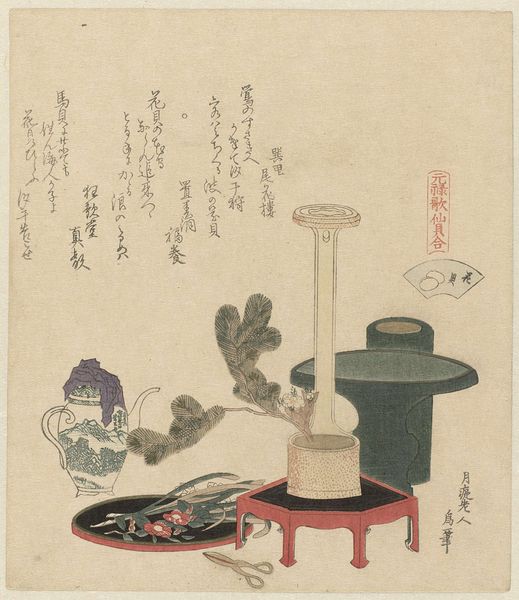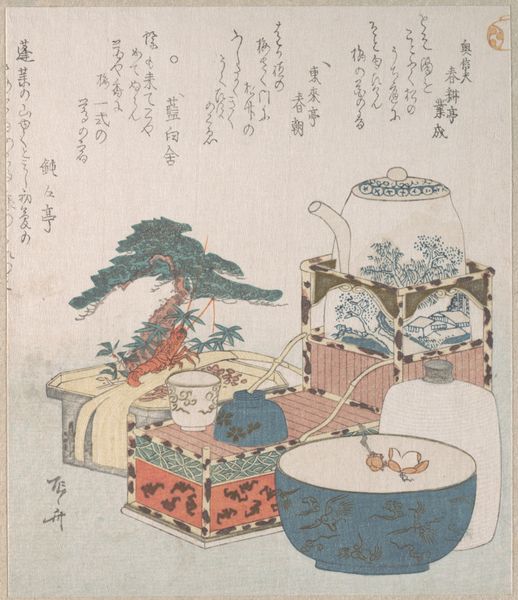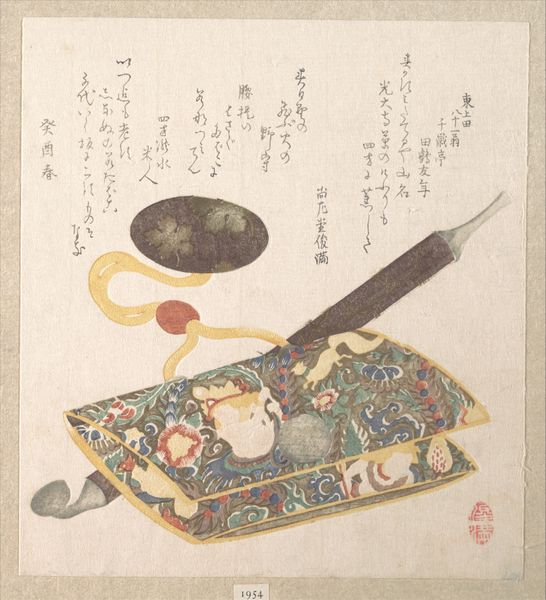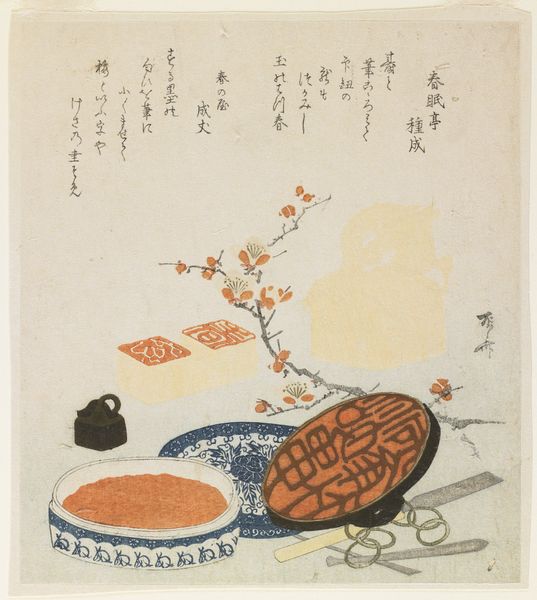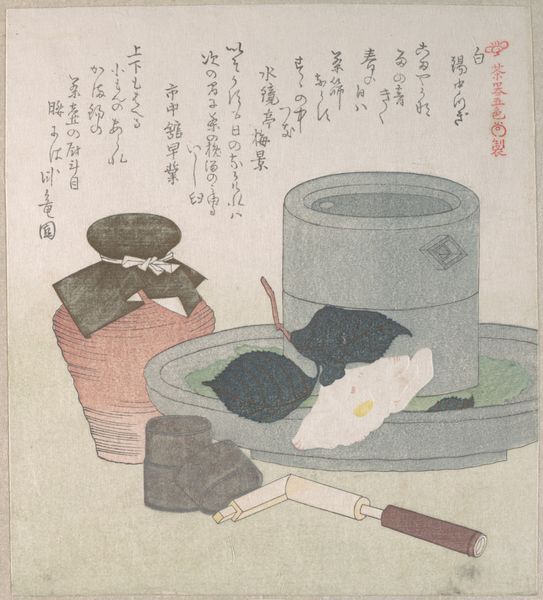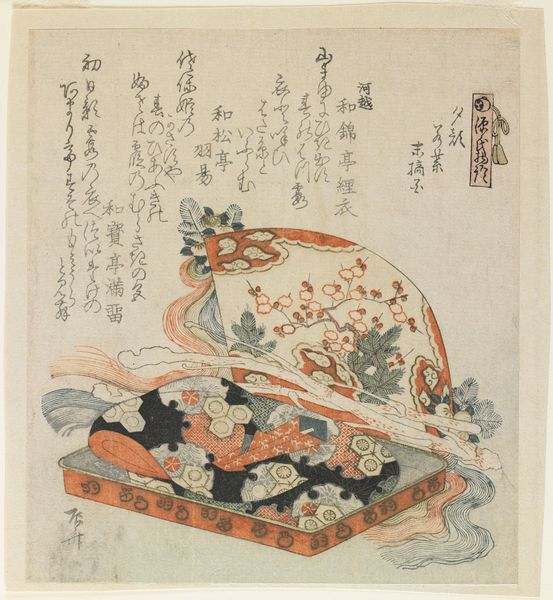
Jar, scales and bowl, no. 6 from the series "The Rabbit's Boastful Exploits (Usagi tegarabanashi)" 1819
0:00
0:00
print, paper, ink, woodblock-print
# print
#
asian-art
#
ukiyo-e
#
paper
#
ink
#
woodblock-print
Dimensions: 21.0 × 18.3 cm
Copyright: Public Domain
Curator: This is “Jar, scales and bowl, no. 6 from the series "The Rabbit's Boastful Exploits (Usagi tegarabanashi)", a woodblock print made in 1819 by Ryūryūkyo Shinsai, currently held at The Art Institute of Chicago. Editor: My first thought is how domestic it feels, like a snapshot of someone's well-used kitchen tools. But there’s also something staged about the composition. Curator: It’s a wonderful example of Ukiyo-e, which flourished in Japan during the Edo period. What we're seeing is not simply a collection of kitchenware; it reflects a deeper connection to the burgeoning merchant class and their embrace of consumer goods and a more accessible culture. The series this print belongs to depicts the boastful exploits of a rabbit, suggesting an undercurrent of social commentary on ambition and class. Editor: Yes, that ties into what feels staged, almost like a still-life designed to convey social messaging. The scale and the bowl are everyday objects, but placing them within this elaborate context turns them into symbols, perhaps about the weighing of merits and accomplishments. The inscription in Japanese is crucial—do we know anything about that? Curator: It appears to be poetry, adding a layer of sophistication to what might otherwise seem purely functional. Ukiyo-e prints were frequently accompanied by poems, elevating the visual experience and connecting it to the broader cultural and intellectual life of the time. Editor: Which makes me wonder, was this print accessible to a wide audience or primarily circulated amongst the literati? What does the rabbit represent in Edo-period Japan, and how did those associations shape the viewing of this print? I feel there is a tension here; at the same time this piece documents everyday consumerism and the expansion of a merchant class, this print also excludes many who would never have the means to acquire or utilize those kitchen tools. Curator: Exactly. The symbolism inherent in these carefully rendered objects extends beyond aesthetics, engaging questions around access, labor, and class. Editor: It provides such an engaging lens through which to understand the complex and often contradictory nature of social dynamics at the time. Curator: I agree; art historical works help inform ways in which consumerism shapes contemporary lives, making works such as these so vital for broader analysis.
Comments
No comments
Be the first to comment and join the conversation on the ultimate creative platform.
